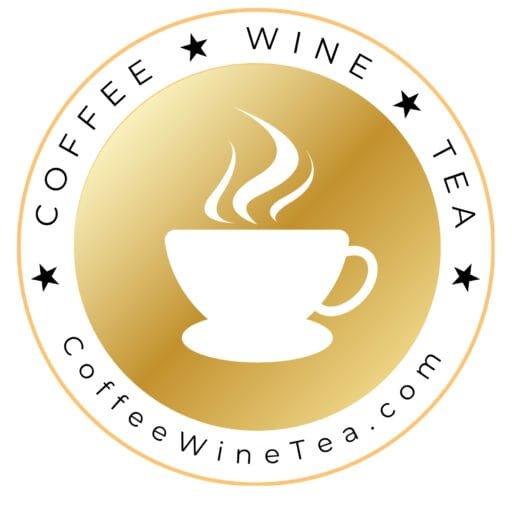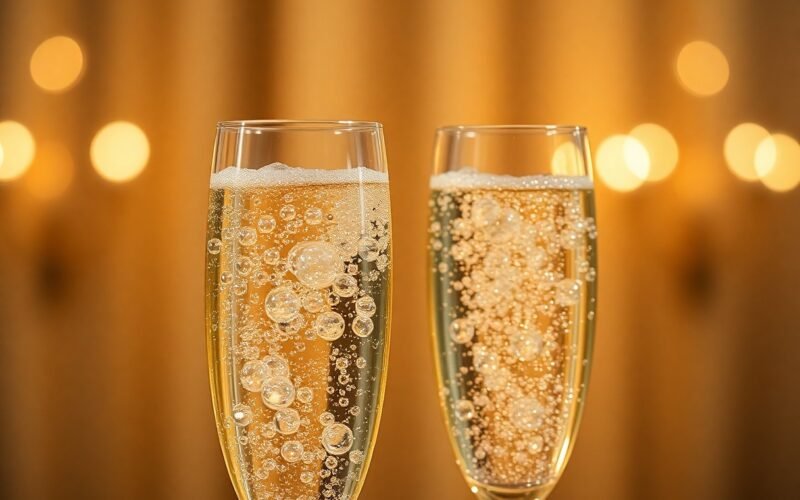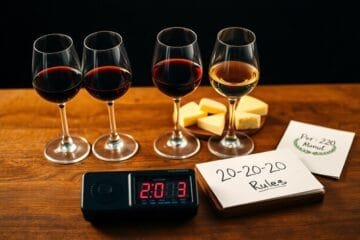Unique in both science and taste, the bubbles in champagne are not just for show; they play a significant role in enhancing your overall experience. These effervescent marvels create complex aromas and a distinct texture on your palate, contributing to champagne’s allure. Understanding how these tiny, sparkling spheres form can deepen your appreciation for this beloved beverage. For an in-depth exploration, check out The Strange Mystery of Champagne Bubbles Can Finally …, and examine the fascinating chemistry behind those delightful bubbles.
Key Takeaways:
- The unique shape of Champagne bubbles is attributed to the specific pressure and temperature conditions during fermentation, which influences their size and the rate at which they rise.
- Champagne bubbles release aromatic compounds, enhancing the overall tasting experience by delivering a bouquet of flavors as they burst, contributing to its delightful sensory profile.
- The presence of carbon dioxide in Champagne creates a gentle effervescence that not only adds to the mouthfeel but also serves to balance the acidity and sweetness of the wine, making it a versatile choice for pairing with various foods.
The Science of Sparkling: How Carbonation Works
Champagne’s effervescence stems from dissolved carbon dioxide (CO2), a result of fermentation. As yeast consumes sugars in the grape juice, it produces alcohol and CO2, which is trapped within the closed environment of the bottle. This process leads to the formation of Bubbles and Flow Patterns in Champagne, creating both pressure and those delightful bubbles that you see when the cork is popped.
The Role of Yeasts and Fermentation
Yeasts are the unsung heroes in the creation of Champagne bubbles. During fermentation, yeasts convert sugars into alcohol and CO2, enhancing both the flavor profile and effervescence of the drink. The second fermentation, which occurs in the bottle, intensifies this process, producing a higher concentration of CO2 that contributes to the lively characteristics of your glass of Champagne.
Pressure and Temperature: A Delicate Balance
The relationship between pressure and temperature in a bottle of Champagne is where the magic happens. Inside, pressures can reach up to 90 psi, creating the potential for an explosive release of bubbles when uncorked. Proper storage temperature—ideally between 45°F and 65°F—ensures that the pressure remains stable, allowing you to enjoy the full sensory experience when you pour.
Pressure and Temperature: A Delicate Balance
| Pressure | Temperature |
|---|---|
| 90 psi in bottle | Ideal storage: 45°F – 65°F |
| Explosive release potential | Temperature influences flavor and effervescence |
The balance of pressure and temperature is not merely a trivial detail but a fundamental aspect of the Champagne experience. At room temperature, CO2 can escape rapidly, robbing your drink of its signature bubbles. Conversely, low temperatures enhance the solubility of the gas, allowing you to savor that perfect fizz. Understanding these factors can enhance your appreciation for the craft behind this sparkling delight.
Pressure and Temperature: A Delicate Balance
| Pressure Factors | Temperature Factors |
|---|---|
| High pressure leads to formation of bubbles | Warm temperatures can release gas too quickly |
| Pressure must be maintained for optimal taste | Cool temperatures preserve the Champagne’s integrity |
The Art of Bubbles: Craftsmanship in Champagne Production
The exquisite bubbles found in champagne are a product of meticulous craftsmanship that begins in the vineyard and extends through the winemaking process. Champagne producers employ traditional methods that have been refined over centuries, resulting in a beverage that embodies a unique marriage of artistry and science. The expertise of each winemaker influences everything from grape selection to fermentation techniques, ultimately determining the quality and character of the bubbles that will tantalize your palate.
Traditional Methods and Their Impact on Bubble Quality
Champagne owes its signature effervescence to the traditional méthode champenoise, which involves a secondary fermentation occurring in the bottle. By carefully controlling conditions during this phase, winemakers can craft fine and persistent bubbles. This process, also known as méthode traditionnelle, requires patience as the wine matures, allowing the bubbles to develop a delicate and creamy texture that elevates the tasting experience.
Terroir’s Influence: How Soil and Climate Shape the Experience
In champagne, your experience is deeply influenced by the concept of terroir. The soils, local climate, and topography of the Champagne region contribute significantly to the flavor profiles and characteristics of the bubbles produced. Different vineyards yield grapes that reflect their unique environments, with factors like chalky soils enhancing minerality and freshness in the wine. By exploring these variances, you gain an appreciation for how the essence of the land translates into every effervescent sip.
The Champagne region exhibits a diverse climate with its cool, continental conditions that favor the cultivation of specific grape varieties such as Chardonnay, Pinot Noir, and Pinot Meunier. The historic chalk soils, formed from ancient seabeds, retain moisture and promote excellent drainage, benefiting the vines during hot summer months. This interplay between soil and climate yields grapes that are not only ripe but also maintain the necessary acidity for balanced wines. As you enjoy your next glass of champagne, consider how the nuances of terroir shape each delightful bubble that dances on your tongue, creating a rich tapestry of flavors crafted from the land’s unique gifts.
The Elaborate Dance of Flavor and Aroma
The intricate interplay of bubbles in champagne not only influences its texture but also serves to elevate the overall sensory experience. As you sip, tiny bubbles carry volatile aroma compounds to your nose, enhancing the bouquet and flavor profile. This process, significantly different from still wines, transforms each sip into a vibrant exploration of scents and tastes, unlocking layers of complexity you may not even realize are present.
How Bubbles Enhance Sensory Perception
The effervescence in champagne acts as a catalyst for your taste buds, stimulating your palate and enhancing the perception of sweetness, acidity, and minerality. These bubbles create a sensation that dances on your tongue, making each sip more dynamic and enjoyable. As the bubbles burst, they release aromatic compounds that draw you deeper into the experience, turning every glass into a delightful journey of sensations.
The Connection Between Bubble Size and Taste
Bubble size plays a pivotal role in the overall flavor experience of champagne. Smaller bubbles tend to produce a more refined texture, contributing to a creamier mouthfeel and a prolonged flavor release. In contrast, larger bubbles can create a more explosive sensation and vibrant energy on the palate, impacting the intensity of the experience. The meticulous nature of champagne production ensures that each bubble is crafted for optimal enjoyment.
Research suggests that the ideal bubble size for champagne is around 1 to 2 millimeters in diameter, where the balance of texture and flavor is harmonized. Smaller bubbles provide a steady release, allowing the wine’s nuances to unfold gradually, while larger bubbles burst quickly, creating a lively interaction with your palate. This interplay can also influence how various tasting notes are perceived; for instance, a champagne with smaller bubbles might express cleaner, more subtle flavors, while larger bubbles tend to amplify bold characteristics. Thus, the artistry of bubble engineering is integral to the overall champagne experience.
A Cultural Icon: The Symbolism of Champagne
Champagne has transcended its role as merely a sparkling wine to become a profound cultural icon. It symbolizes luxury, celebration, and the finer things in life. With its origins deeply rooted in the historic Champagne region of France, this effervescent beverage represents moments of triumph, love, and joy, serving as a companion to milestones from weddings to new year’s celebrations. The mere presence of Champagne elevates experiences, turning simple gatherings into memorable events.
Champagne as a Celebration: Unpacking Its Social Significance
Pop the cork, and the world seems to celebrate with you. Champagne embodies joyous occasions and has been synonymous with festivities for centuries. Traditionally, you might find it poured during weddings, anniversaries, and even corporate accolades, creating an undeniable bond between this bubbly drink and the human experience of honoring special moments. The act of toasting with Champagne carries a weight of camaraderie, emotionally linking you to those important events in your life.
The Global Fascination: Why Champagne Captivates Across Cultures
Everywhere you go, people are enchanted by Champagne’s allure. Across different cultures, this bubbly beverage evokes feelings of sophistication and exclusivity. From high-end celebrations in Europe to casual gatherings in the Americas, you’ll find a shared appreciation for its intricate flavors and effervescent charm. Much of this fascination lies in Champagne’s rich history, the art of its production, and its ability to craft unique experiences that resonate universally.
Cultures around the globe have adopted Champagne not only as a celebratory drink but as a symbol of success and accomplishment. Its association with luxury brands and high-profile events has fueled an aura of exclusivity, making it a coveted choice among connoisseurs and casual drinkers alike. In Japan, for instance, Champagne has found a special place during traditional ceremonies like weddings, embodying both love and prosperity. Meanwhile, in Brazil, it has become a staple at Carnival, symbolizing joy and festivity. This widespread embrace showcases the beverage’s unique capacity to connect different communities through shared celebrations, emphasizing that regardless of where you are, a glass of Champagne can make any moment feel monumental.
Beyond the Glass: The Environmental and Economic Impact
Understanding champagne’s charm extends beyond your glass; it reveals the intertwined environmental and economic impacts of this beloved beverage. As you sip, consider the vineyards, sustainable practices, and local economies that thrive through champagne production. The effort put into New discovery explains what makes Champagne bubbles … not only highlights the magic within but also results in an industry conscious of its ecological footprint.
Sustainability in Champagne Production
Sustainability plays a vital role in champagne production, with many vineyards adopting organic farming practices and biodynamic techniques. By minimizing chemical use and enhancing biodiversity in vineyards, producers such as Champagne Taittinger and Champagne Louis Roederer demonstrate their commitment to maintaining healthy ecosystems. This approach not only yields better quality grapes but also ensures that the land remains viable for future generations. Sustainable practices enhance the charm of your bubbly experience by ensuring environmental stewardship.
The Economic Factors Influencing Champagne’s Prestige
The prestige of champagne is significantly influenced by economic factors, including its limited production and high demand. Given that champagne can only be produced in the Champagne region of France, strict regulations ensure quality and rarity, driving up market prices. Brands leverage their heritage, unique terroir, and innovative production methods to cultivate exclusivity, making each bottle a symbol of luxury. You’ll find that this perceived value compounds the allure of champagne, making it a sought-after choice for celebrations.
- limited production
- high demand
- strict regulations
- hermetic heritage
- luxury symbol
The exclusivity and meticulous processes of champagne production contribute significantly to its market prestige. For example, renowned houses like Moët & Chandon and Dom Pérignon use meticulously selected grapes, often hand-harvested, to create their premium blends. The result is a distinctive bouquet that demands a higher price due to its perceived quality and desirable characteristics. This elevated status also nurtures a culture of gifting, making champagne a staple in celebratory settings, from weddings to anniversaries. Knowing this enhances your appreciation for each sip, connecting you to the intricate world of champagne’s economics.
- exclusivity
- hand-harvested grapes
- distinctive bouquet
- premium blends
- gifting culture
To wrap up
Presently, you can appreciate that the unique and delightful bubbles of Champagne are the result of a meticulous process that involves fermentation, high pressure, and the artistry of blending. These tiny, effervescent gems not only enhance the sensory experience but also indicate the quality and craftsmanship behind each bottle. By understanding the science and tradition behind Champagne’s bubbles, you can elevate your enjoyment and appreciation of this exquisite beverage, making every sip a celebration in itself.
FAQ
Q: What causes the bubbles in Champagne to form?
A: The bubbles in Champagne are formed through a process known as secondary fermentation. This occurs in the bottle after the initial fermentation has taken place. Yeast is added to the wine along with sugar, which triggers fermentation, producing carbon dioxide. Since the gas cannot escape the sealed bottle, it dissolves into the wine and later forms the delightful bubbles when the bottle is opened.
Q: Why are the bubbles in Champagne considered more delicate compared to other sparkling wines?
A: The unique method of production and the quality of the grapes used contribute to the delicate nature of Champagne bubbles. Champagne is typically made from Chardonnay, Pinot Noir, and Pinot Meunier grapes, which create finer effervescence. The traditional method, known as “Méthode Champenoise,” also enhances the bubble’s texture, resulting in smaller and more persistent bubbles compared to those found in other sparkling wines.
Q: How do the serving temperature and glass shape affect the perception of Champagne bubbles?
A: Serving temperature and the shape of the glass can significantly influence the drinking experience of Champagne. Ideally, Champagne should be served chilled, around 45-50°F (7-10°C), which helps preserve the bubbles. Additionally, the shape of the glass plays a role; flutes are designed to enhance bubble formation and concentration of aromas, allowing for a more delightful sensory experience. Alternatively, wider glasses like coupes can allow for a different mouthfeel and aroma delivery, showcasing the unique characteristics of the Champagne.




